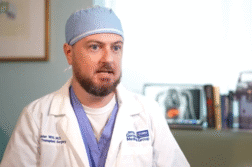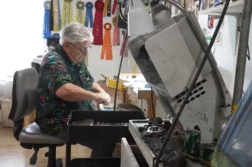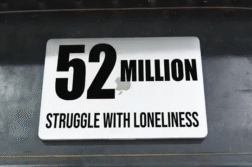ORLANDO, Fla. (Ivanhoe Newswire) — Today, 130 Americans will take their own life. Tomorrow, another 130 will. And the trend will continue day after day after day. Almost everyone knows someone who has died by suicide, tried to commit suicide, or a family who lost someone to suicide. There are subtle and not-so-subtle warning signs of suicide that we should all know. As Ivanhoe reports, we could end up saving someone’s life.
Every 11 seconds there is a death by suicide.
“Natalie was 22 years old when she took her own life,” shared Marie Dudek Brown.
Suicide doesn’t discriminate. But most of its victims have one thing in common …
“Ninety percent of people that die by suicide have a mental illness,” stated Denisse Centeno Lamas from the American Foundation for Suicide Prevention.
Depression, substance use disorders, and psychosis are the most relevant risk factors. That’s why it’s important for loved ones to know the signs. Some are easier to see …
“Giving their possession away, talking about suicide, writing about suicide, being impulsive,” continued Lamas.
Then there are the subtle signs, including changes in sleeping patterns, changes in behavior, they may become emotionally distanced at home or at work. And be aware if they have a new interest in accessing lethal means … not just purchasing a gun, but stockpiling pills. If you notice any of these things, experts say it’s OK to ask them about it.
“Research has proven just by talking about suicide, you won’t put the idea on the person. On the contrary, you will give some relief to that person who actually wants to die by suicide and wants to open up,” Lamas revealed.
And talking about it is the first step to stopping it. For every one suicide, there are 25 attempts. That’s 25 times someone survived. Maybe the next attempt is someone you could save.
According to the CDC, men are more likely to die by suicide than women, but women are more likely to attempt suicide. If you are having suicidal thoughts or know someone who is, call the National Suicide Prevention lifeline at 1-800-273-TALK.
Contributors to this news report include: Marsha Lewis, Producer; and Roque Correa, Editor.
SUBTLE WARNING SIGNS OF SUICIDE
REPORT #2865
BACKGROUND: Suicide is a death that happens when someone harms themselves because they want to end their life. It is a major public health problem and the 10th leading cause of death in the United States, taking the lives of approximately 47,000 Americans each year. The effects of suicide go beyond the person who acts to take his or her life. It can also have a lasting effect on family, friends, and communities. Some risks of suicide include: depression and other mental health disorders; alcohol or drug use disorder; family history of suicide; family violence, including physical or sexual abuse; having guns in the home; stressful life event, such as a job loss, financial problems, loss of a loved one, or breakup of a relationship; being between the ages of 15 and 24 years or over age 60.
(Source: https://medlineplus.gov/suicide.html and https://www.healthline.com/health/suicide-and-suicidal-behavior)
SUICIDE AND MENTAL DISORDERS: Throughout the U.S., about one in five adults suffer from a diagnosable mental illness/disorder each year which can result in a higher risk of suicide. Research consistently shows a strong link between suicide and depression. Bipolar disorder, also known as manic-depressive illness, is a brain disorder that causes unusual shifts in mood, energy, activity levels, and the ability to carry out day-to-day tasks. Post-traumatic stress disorder, or PTSD, happens when an individual experiences a horrifying ordeal that involves physical harm or the threat of physical harm. Schizophrenia is a brain disorder that is chronic and severe and distorts the way a person thinks, acts, perceives reality, expresses emotions and relates to others. Borderline personality disorder (BPD) is a serious mental illness marked by unstable moods, behavior, and relationships. Dual disorder refers to a situation where an individual suffers from a mental disorder and has an alcohol or drug addiction. Sometimes the mental problem occurs first which can lead people to use alcohol or drugs that make them feel better temporarily. However, sometimes the substance abuse occurs first and over time leads to emotional and mental problems.
(Source: https://save.org/about-suicide/mental-illness-and-suicide/)
NEW NASAL SPRAY FOR HIGH-RISK SUICIDE: The FDA approved a nasal spray that contains esketamine, a chemical cousin of ketamine, for patients with major depressive disorder who hadn’t responded to other treatments. They are adding patients who are having suicidal thoughts or have recently attempted to harm themselves or take their own lives. “Spravato is the first approved antidepressant medication that’s been able to demonstrate a reduction in symptoms of major depressive disorder within 24 hours after the first dose,” says Dr. Michelle Kramer, a psychiatrist and vice president of U.S. neuroscience, medical affairs at Janssen Pharmaceuticals. Studies found that more than 40 percent of suicidal patients who got four weeks of treatment with the drug had greatly reduced symptoms of depression at the end of that period. Although the drug comes in the form of a nasal spray, it is meant to be given in a hospital or clinic setting, not at home, as it can cause changes in blood pressure and heart rate, as well as out-of-body experiences for an hour or so after it is administered.
* For More Information, Contact:
Denisse Lamas
Free weekly e-mail on Medical Breakthroughs from Ivanhoe. To sign up: http://www.ivanhoe.com/ftk



